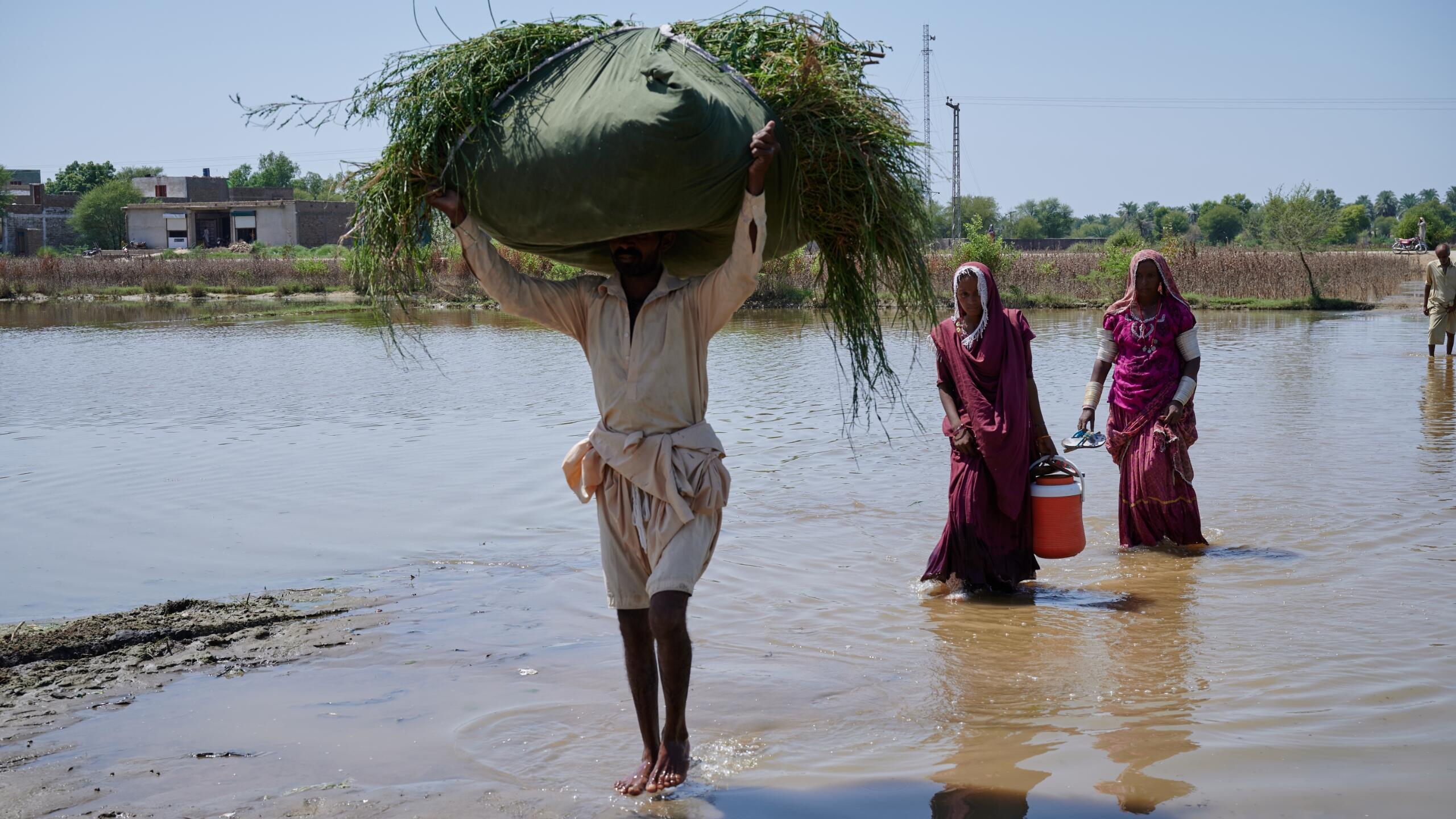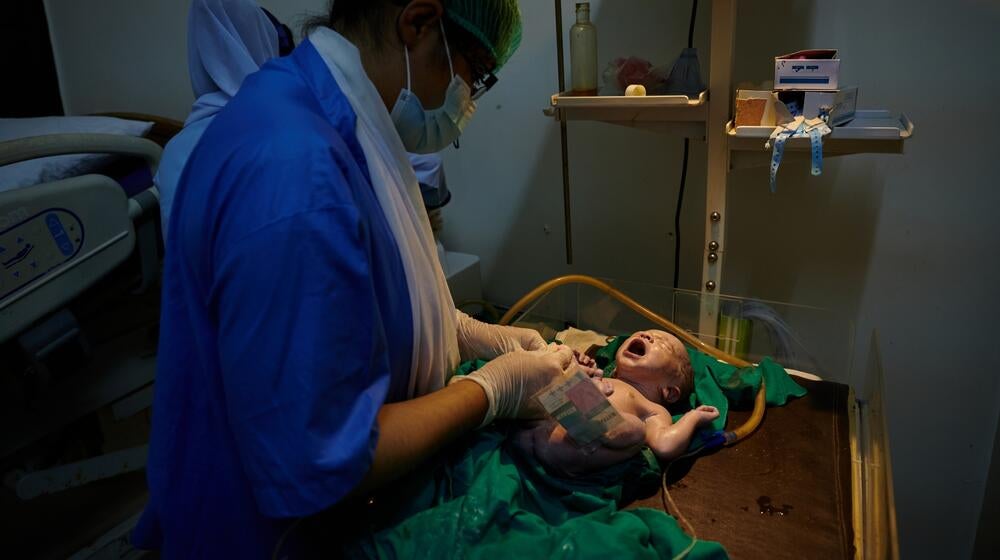
Feature
The multiple crises facing millions of women and girls as Pakistan reels from worst flood in its history
The multiple crises facing millions of women and girls as Pakistan reels from worst flood in its history
The multiple crises facing millions of women and girls as Pakistan reels from worst flood in its history
19 Oct 2022
A nurse cleans a newborn baby delivered by caesarean section at the UNFPA-supported Al-Farabi hospital in the Thatta district of Sindh province. “When crisis hits, women do not stop getting pregnant and giving birth,” said UNFPA Executive Director Dr. Natalia Kanem in a statement.
UNFPA is appealing for $31.6 million in funding to expand its emergency response to provide life-saving services and essential supplies, as well as protection services to support women and girls in Pakistan.
Learn more about the compounding crises which endanger women and girls amid Pakistan’s unprecedented flooding here.
© UNFPA/Shehzad Noorani

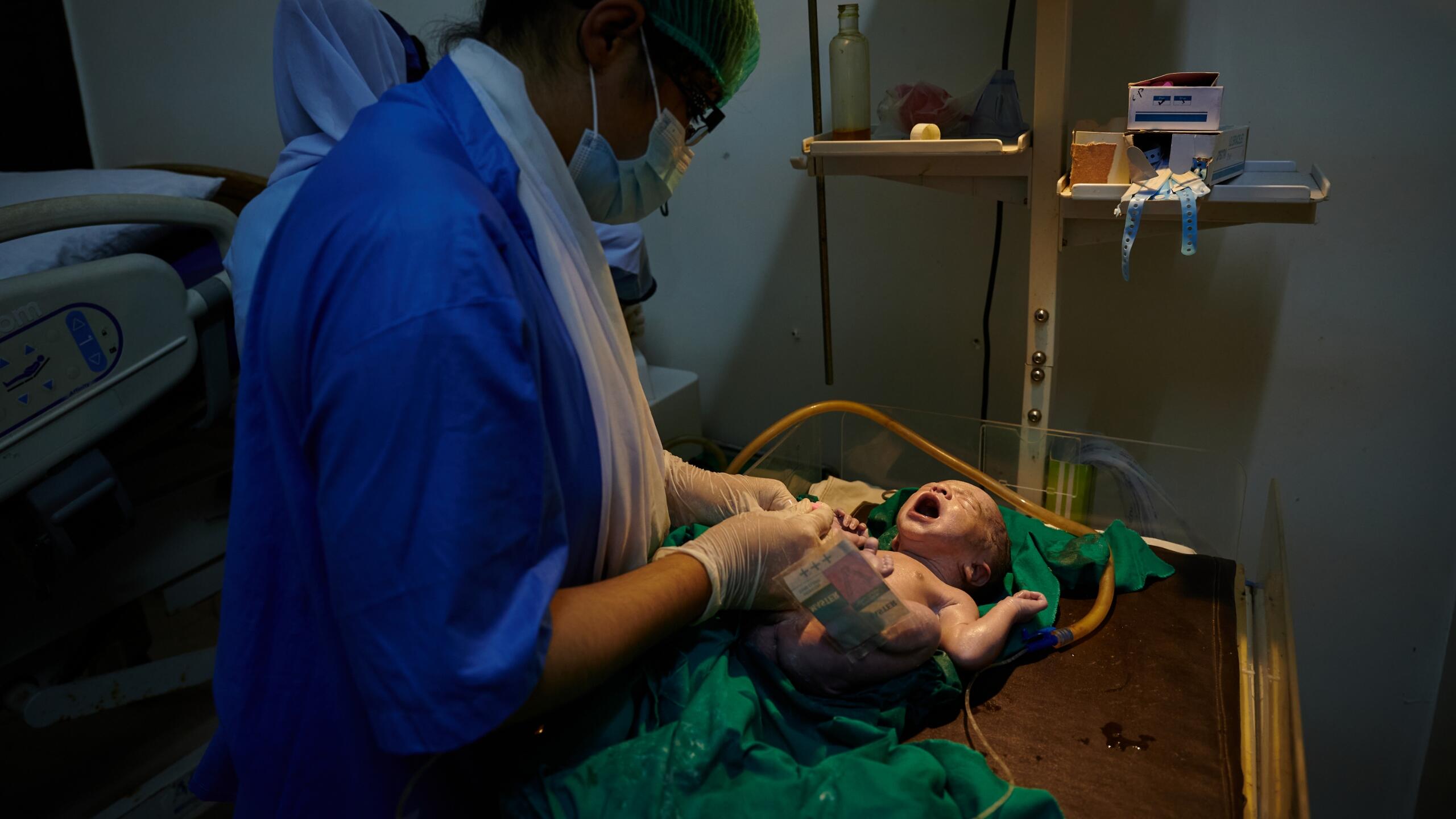
Sitting in front of the rubble of her home, Baharah, 20, swings two-year-old Faraz Ali to sleep in the Shikarpur district of Sindh province. She got married four years ago, at the age of 16 and has two young children. “The village flooded and water started to enter our home,” she told UNFPA. “We were afraid and didn’t know what to do. Suddenly the house collapsed and a wall fell on my son, Soonh.” Both children were injured, but Soonh, who was just two months old, was in critical condition. “It was difficult because of the rain, but we ran to the hospital. There were many people and everyone was screaming. We waited for hours. Finally, doctors saw him and admitted him to the hospital, but he died within three hours.”
© UNFPA / Shehzad Noorani

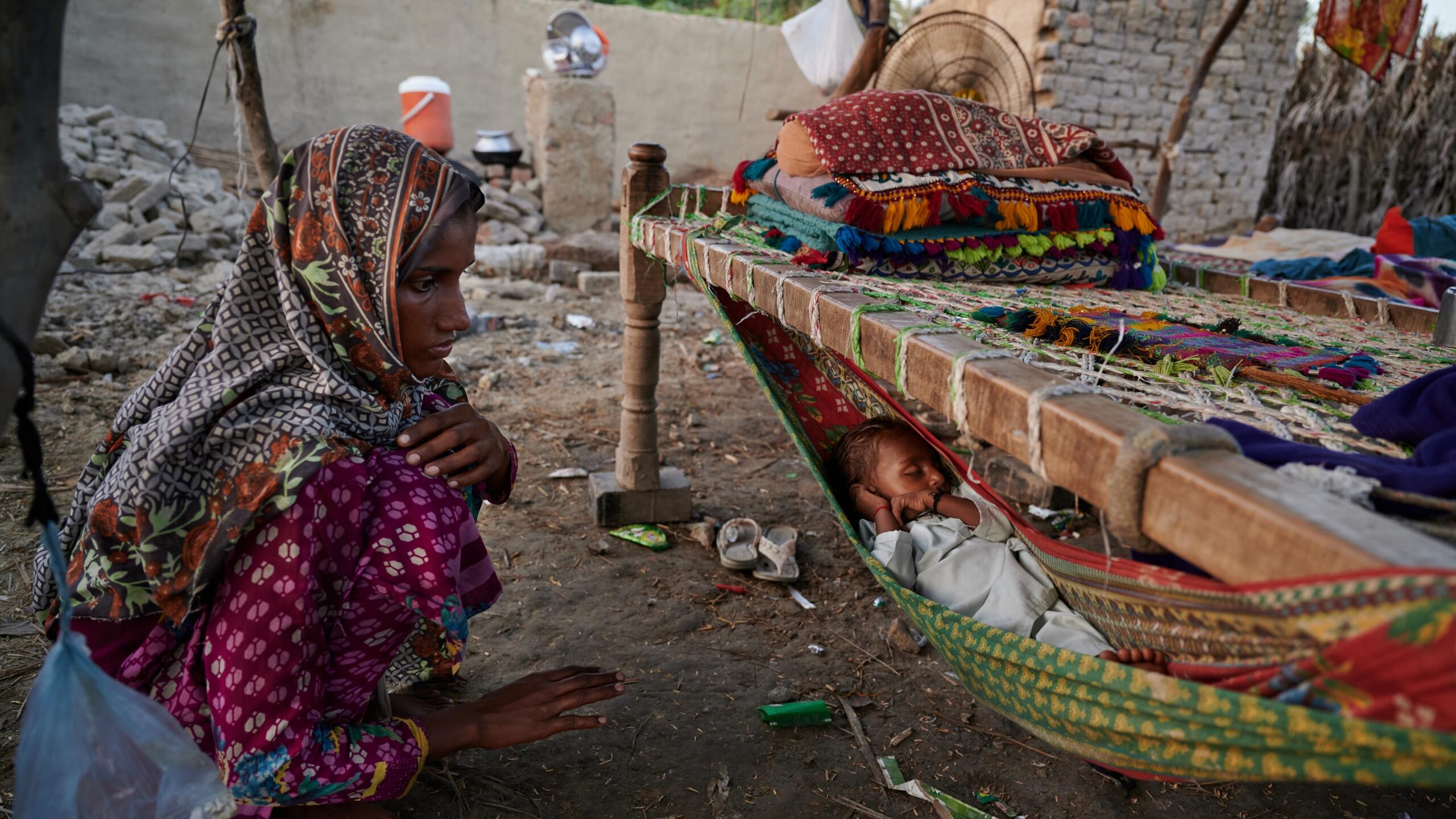
The family of a baby delivered by caesarean section celebrates at the UNFPA-supported Al-Farabi hospital in Sindh province. With more than 740 health facilities damaged in Sindh province and affected districts in Balochistan, UNFPA is working with partners on the ground to prioritize continued availability of and access to life-saving reproductive health services in affected areas.
© UNFPA / Shehzad Noorani

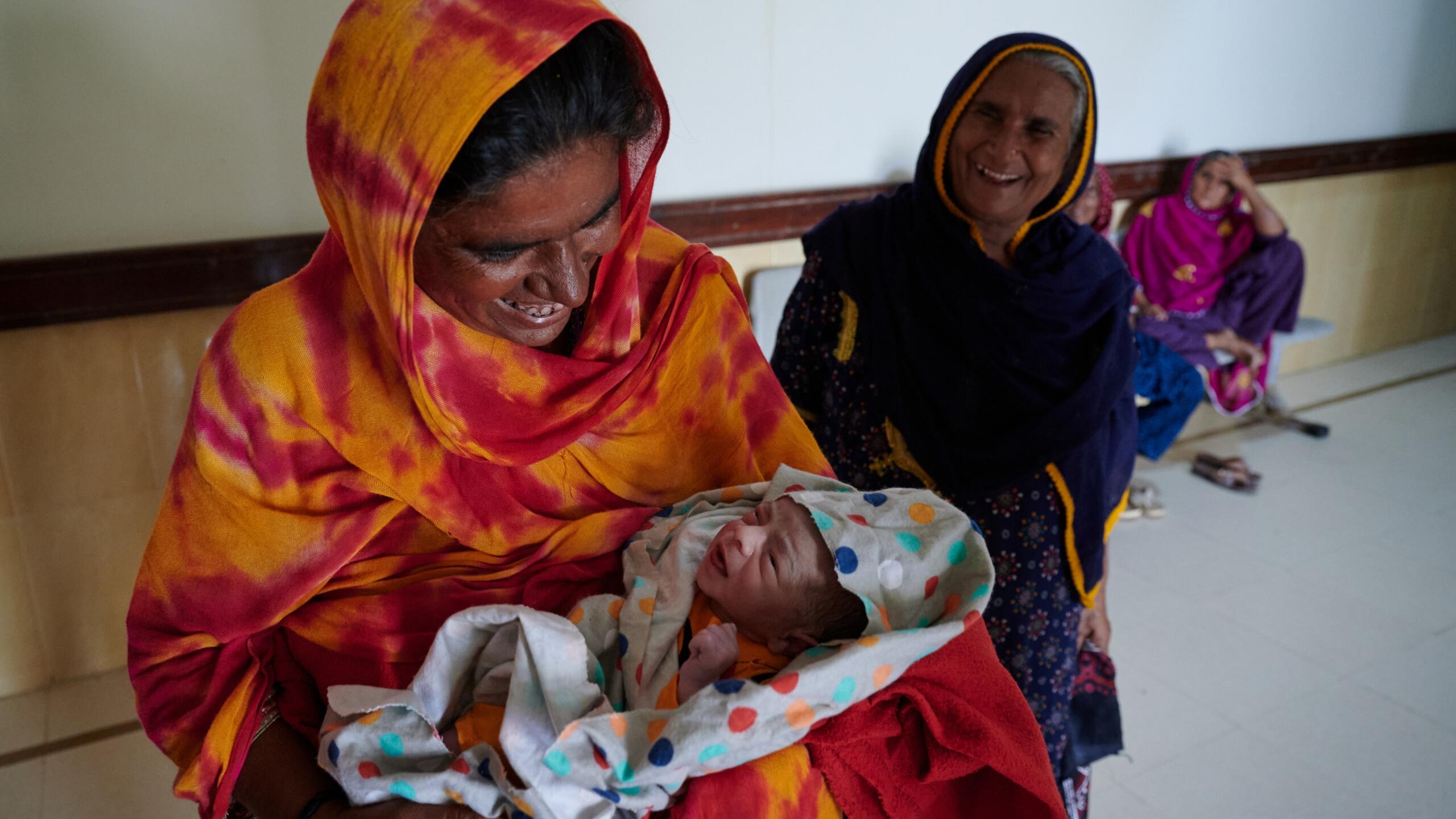
“I had been in pain for days, but when it became intolerable and I started to bleed and fainted, the elders decided to take me to the hospital in a tuk tuk.” Sita, 30, had given birth just five days earlier to baby Kinayat in the village of Ghulam Shabbir Kaladi in the Khairpur district of Sindh province. A traditional birth attendant sat with her on the way, but she went into labour during the journey and delivered on the side of the road. The birth attendant cut the cord with a blade and cleaned the baby with a cloth. Sita is one of some 650,000 pregnant women whose lives and well-being have been jeopardized by the flooding disaster in Pakistan, and who are in need of urgent reproductive health services. UNFPA is providing training and supplies to help women access skilled birth attendants and medical supplies as the country reels from the destructive floods.
© UNFPA / Shehzad Noorani

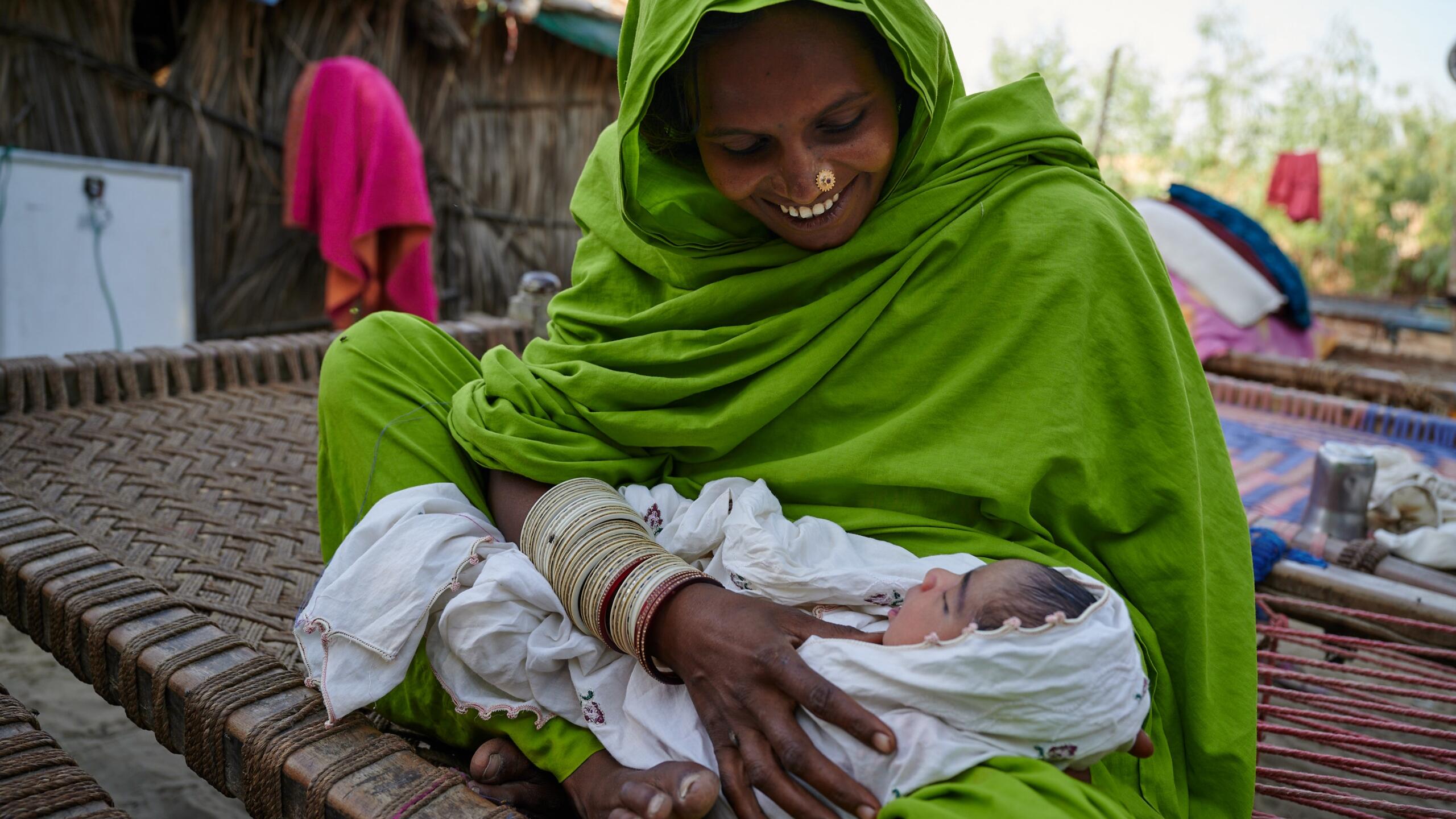
UNFPA-supported mobile health clinics are providing critical services to women and children during the crisis. In case of medical emergencies for pregnant women, the clinic has an ambulance that transports them to hospitals that are equipped to deal with both regular and complicated deliveries, including caesarean sections. Zeenat and her four children lost their home to the floods and now live in a tent on the bank of the river while they wait for the floodwaters to recede.
© UNFPA / Shehzad Noorani

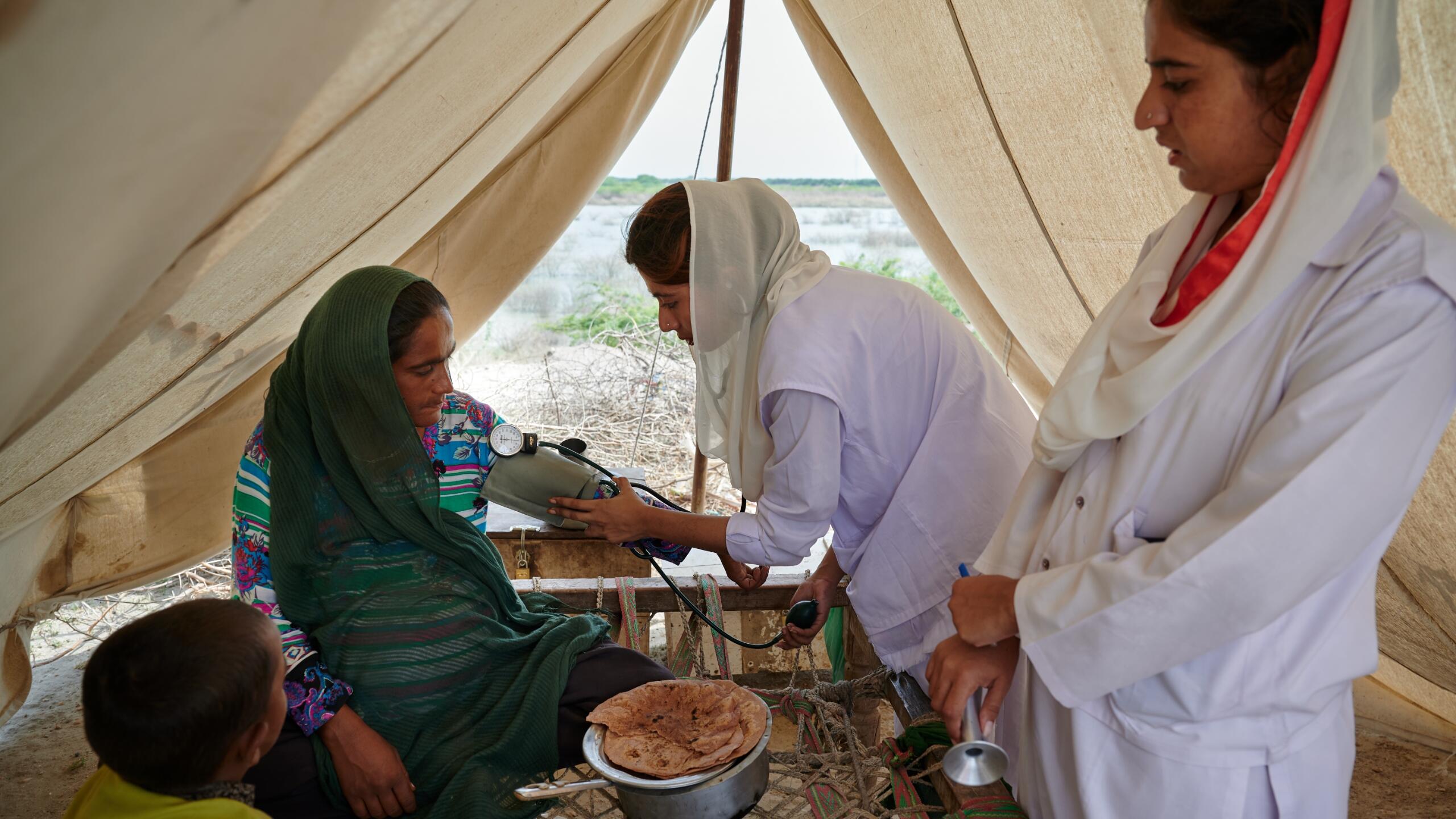
Sitting outside a tent by the side of a highway, a woman prepares breakfast for her family near the village of Mullah Hussain Sahro in the Dadu district of Sindh province. Villages in the Dadu district are some of the worst affected by the floods, with most people unable to commute, work or access essential services. Water has started to recede in some areas but standing pools of water breeds millions of mosquitoes. Many families that survive on daily wages remain out of work due to the massive damage to the infrastructure and agriculture fields. People are suffering from diseases like malaria, diarrhoea, malnutrition and dehydration. Pakistan is one of the countries that contributes the least to climate change yet is suffering some of the most devastating fallout.
© UNFPA / Shehzad Noorani

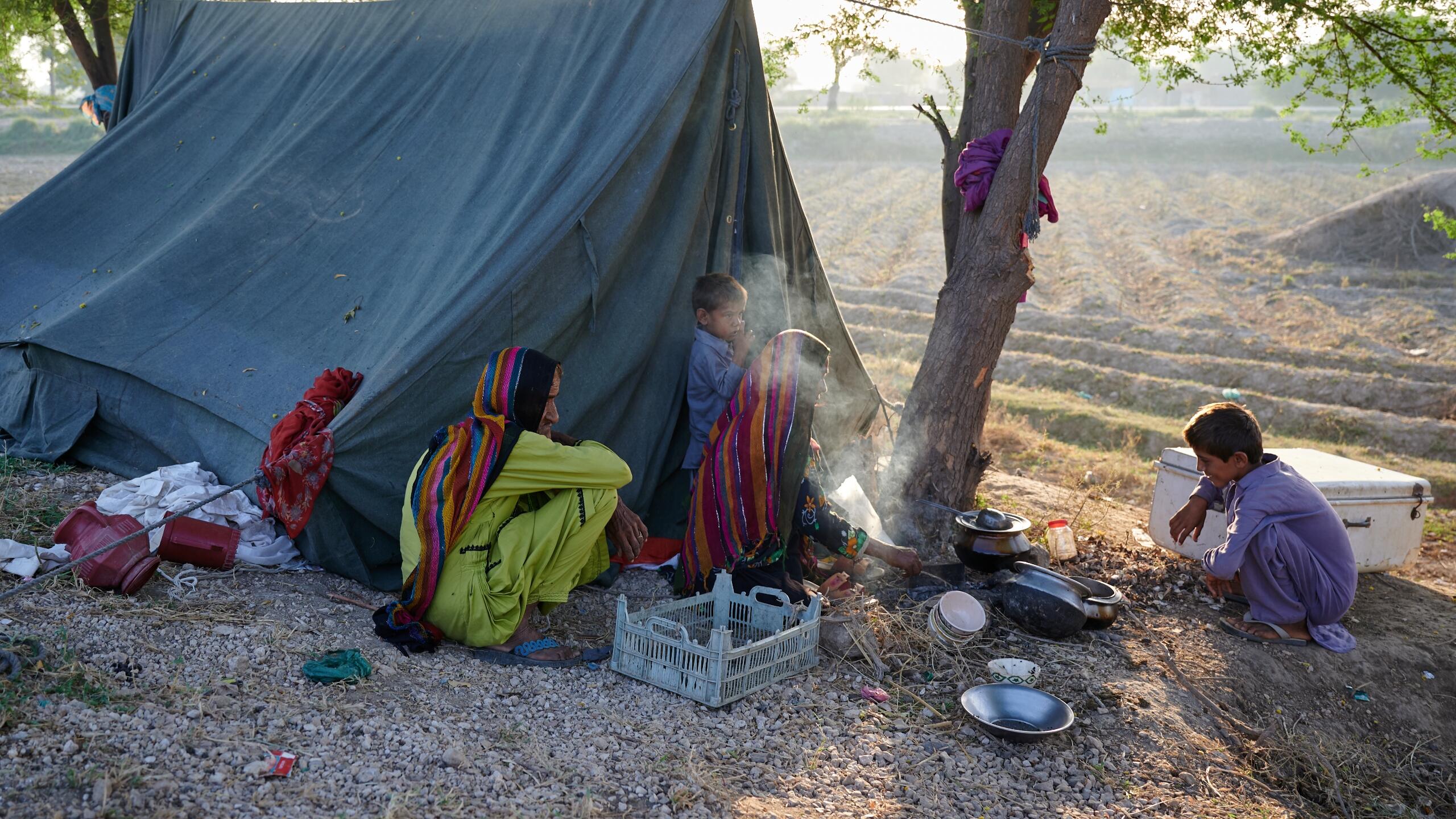
Nadia, 20, holds her newborn son Dildar in a makeshift shelter on an embankment in Johi Taluka, in Sindh Province. Dildar was born during the floods, and Nadia lives with her husband Zulfiqar and their children on the embankment waiting for flood waters to recede so they can return to their village. Telling the story of the night she delivered Dildar, Nadia said, “It was raining really hard. I was in pain and my water broke so my mother-in-law decided to take me to the doctor. The hospital was one hour away by rickshaw. I suffered from pain for the whole night and gave birth in the morning. The baby was underweight and showed signs of pneumonia, so he was kept in an incubator. I had been told I would probably have to deliver by caesarean section, otherwise we would have called the traditional birth attendant: It’s very expensive to go to hospital.”
© UNFPA / Shehzad Noorani

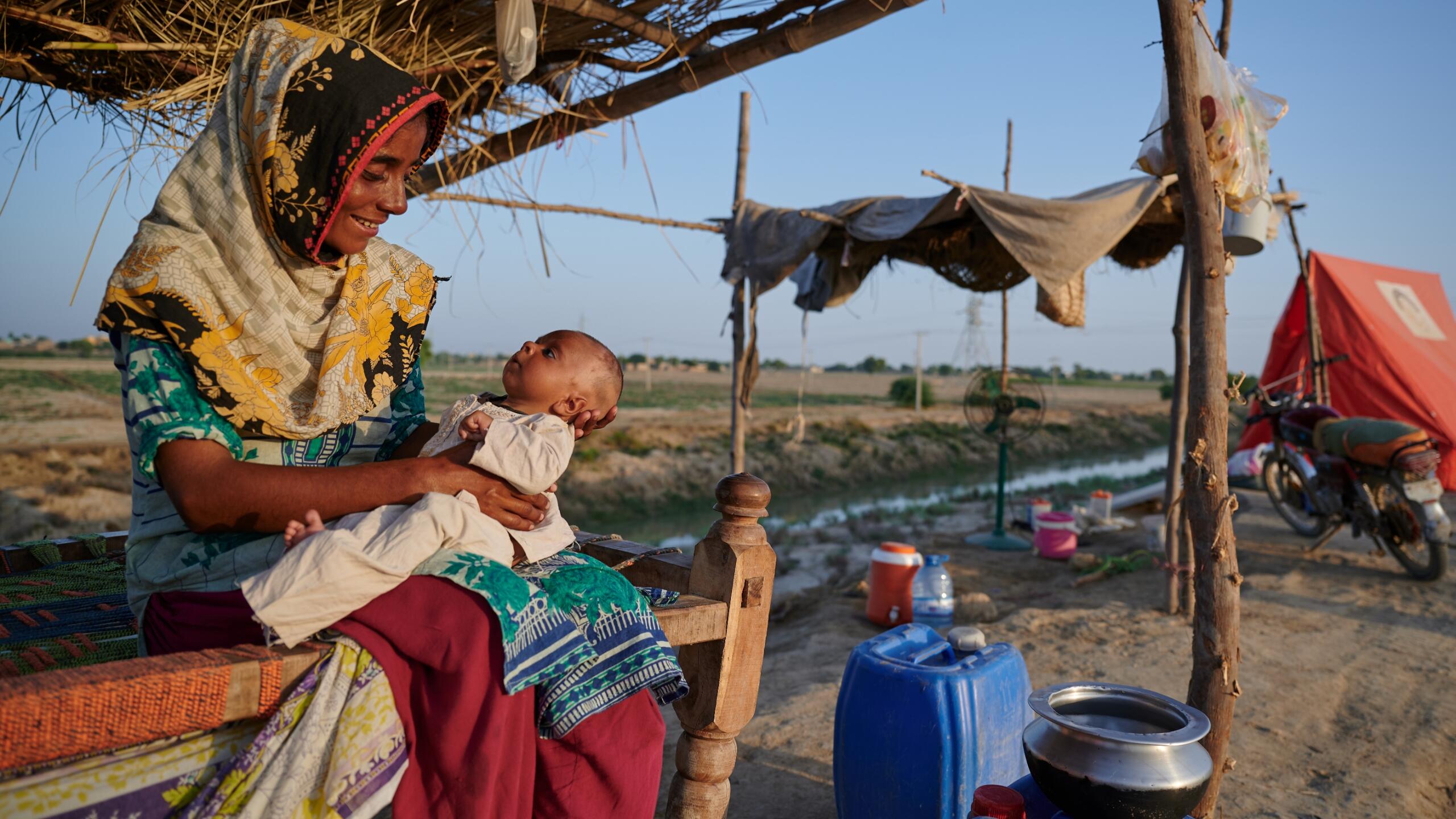
Gohar Khatoon, 20, sits with her four-month-old son Karim Buksh, and her other two children, Irum, 3, and Younus, 2, in their flood-damaged home in Sindh province. Most of the homes in her area were completely destroyed. As the water has started to recede, villagers have returned to try to rescue what they can. More than 170,000 women affected by the floods will give birth in the next year and are in dire need of health services, trained midwives and supplies to ensure a safe birth and critical postnatal care.
© UNFPA / Shehzad Noorani

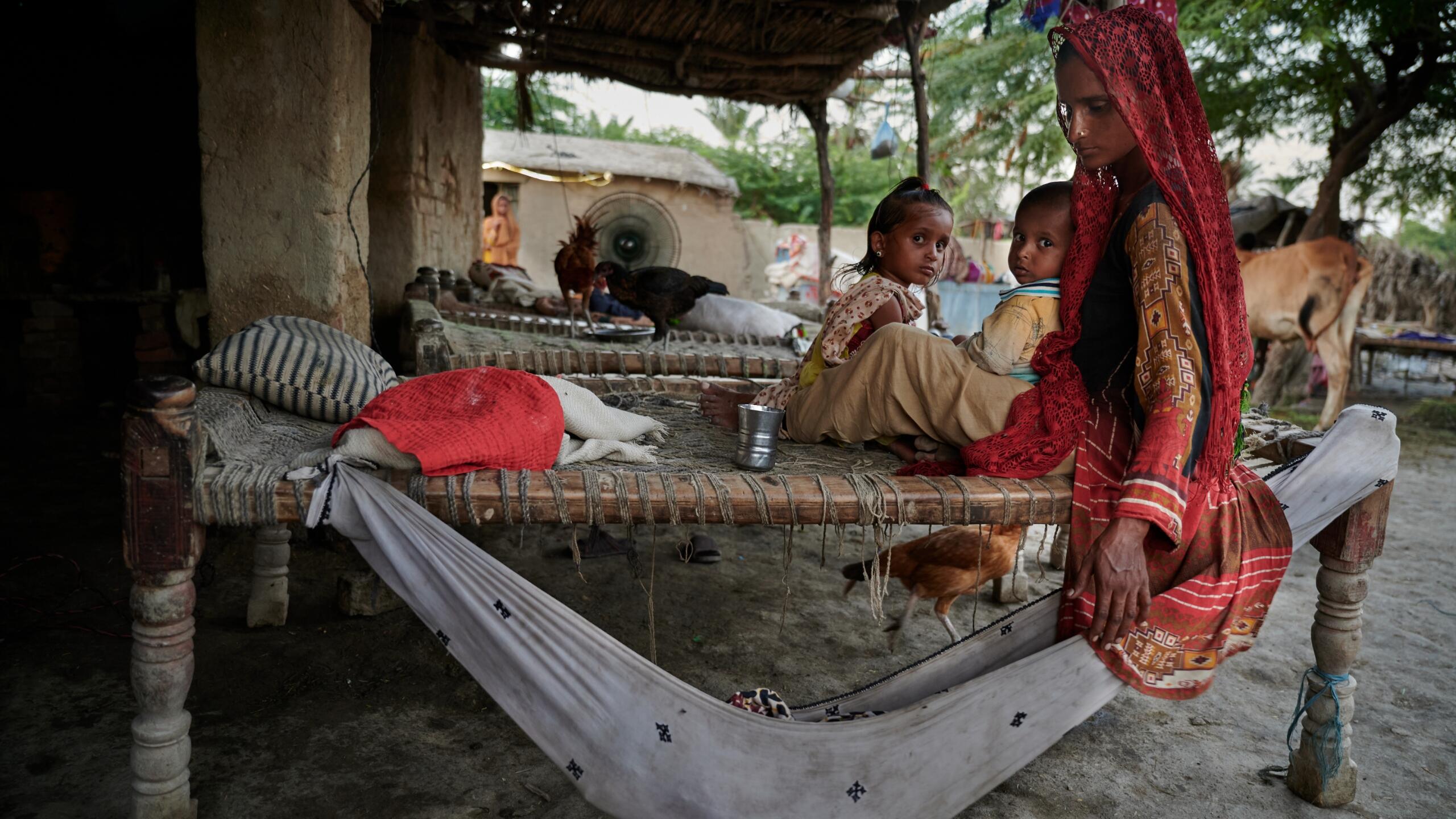
Zameera is 22 years old and 6-months pregnant. A nurse checks her blood pressure at a UNFPA-supported mobile medical camp, which was hastily built on the banks of a river in Goth Ramzan Mollah in the Sujawal district, Sindh province. With a focus on antenatal care, the mobile clinic provides essential and emergency medical services to women and children displaced by the flooding. In cases of medical emergencies for pregnant women, the clinic has an ambulance to transport them to hospitals with facilities for regular and complicated deliveries, including caesarean sections.
© UNFPA / Shehzad Noorani

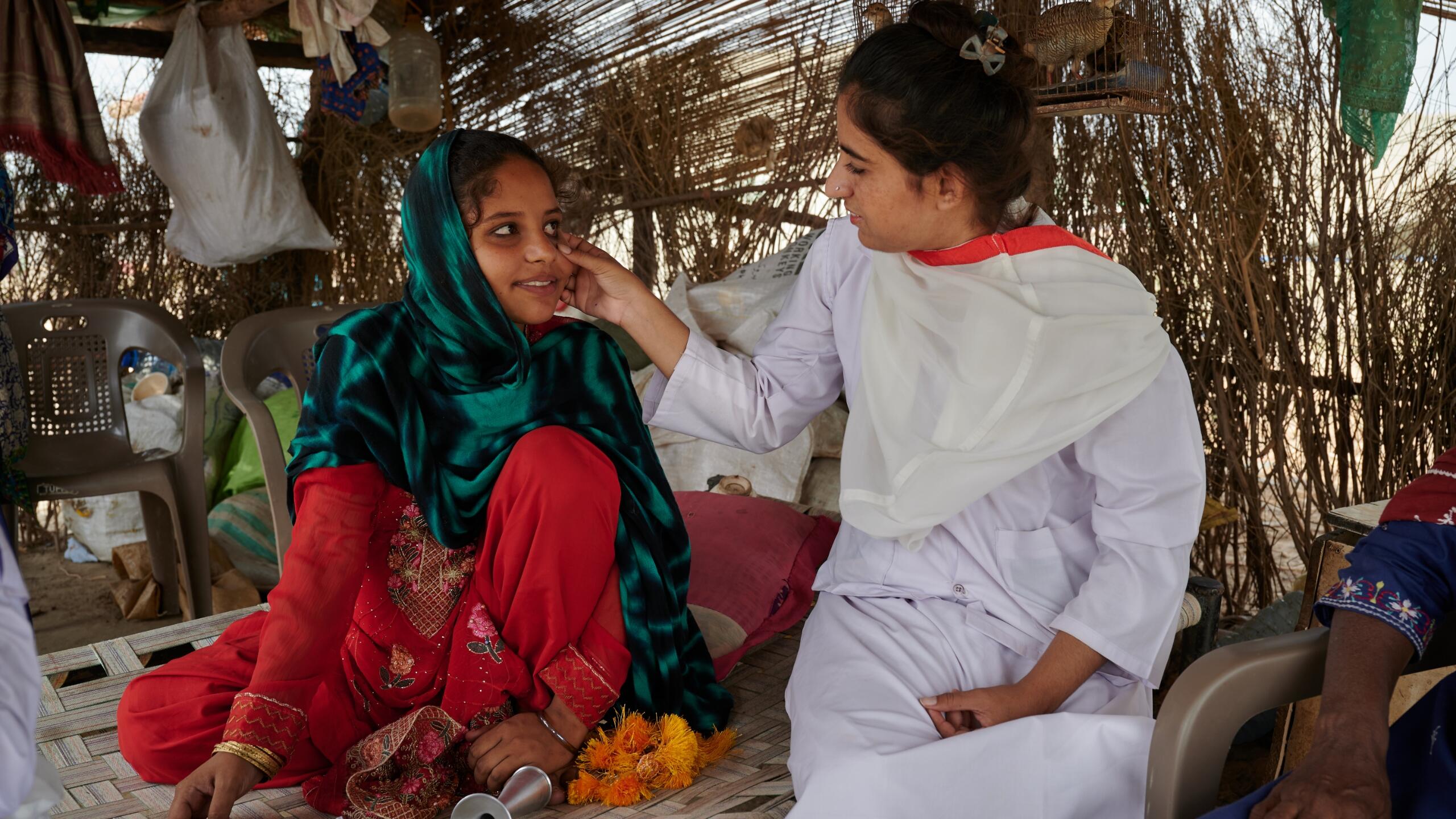
Guddi sits with 8-month-old Akshara and her two other daughters outside their home in the village of Ghulam Shabbir Kaladi in the Khairpur district of Sindh Province. Akshara is suffering from severe acute malnutrition and was taken to a clinic to be treated. She still had a cannula attached to her hands so she could be given medication quickly when needed again. When asked if she is breastfeeding Akshara, she replied, “Do you think I have anything in me to feed her?” Even before the floods, Pakistan had one of the highest rates of maternal mortality in Asia – this is now likely to rise further still as women lose access to health care and conditions such anaemia – a leading cause of maternal death in the country – soar with malnutrition.
© UNFPA / Shehzad Noorani

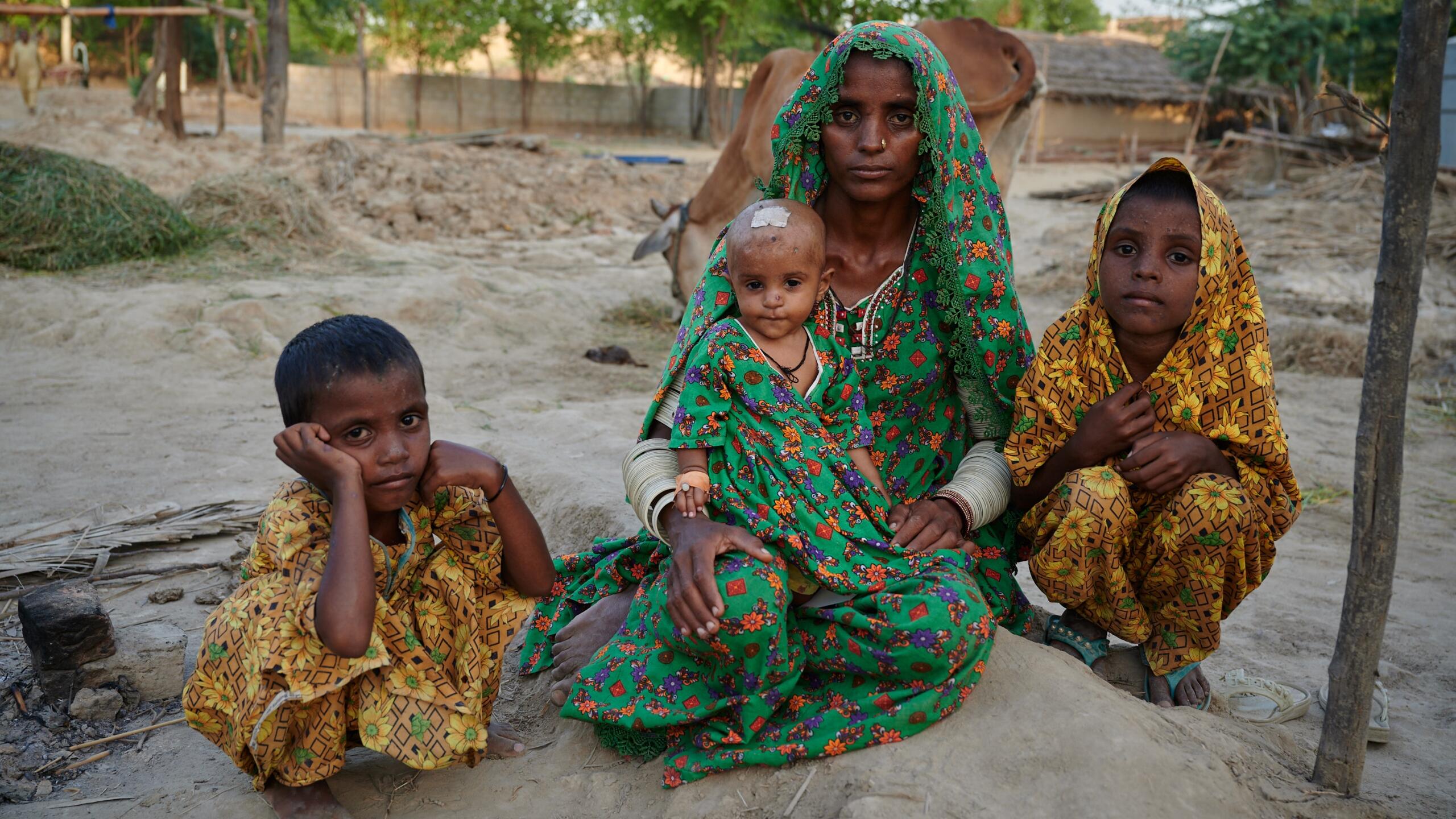
Rani, 14, collects water from a hand pump by her home in Shikarpur district, Sindh province. One of 11 children, she told UNFPA, “No one in my family has ever gone to school. My father and three brothers work as labourers and still cannot earn enough to pull us out of poverty. Our lives were miserable anyway, and now the flood has created yet more havoc. There is less work, but we try. I will never have so many children.”
© UNFPA / Shehzad Noorani

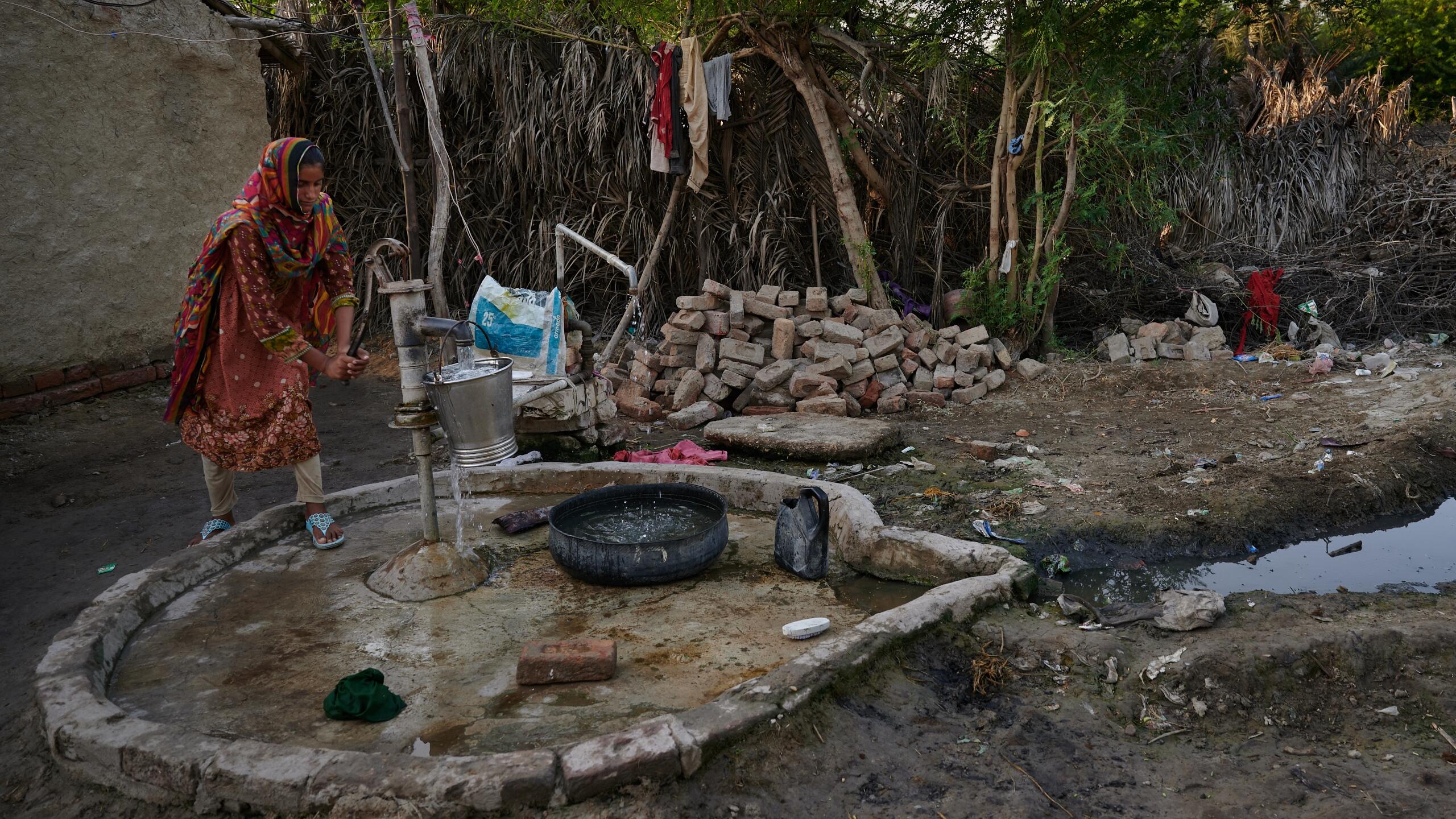
Zaib is three months pregnant and suffering from malaria. Her husband Ahmad tries to comfort her while holding their three-year-old son Zoya. The family are currently living in a temporary shelter Ahmad built on the side of a road after the flooding destroyed their home in the Shikarpur district, Sindh province. Where possible, pregnant women are being treated in temporary camps.
© UNFPA / Shehzad Noorani

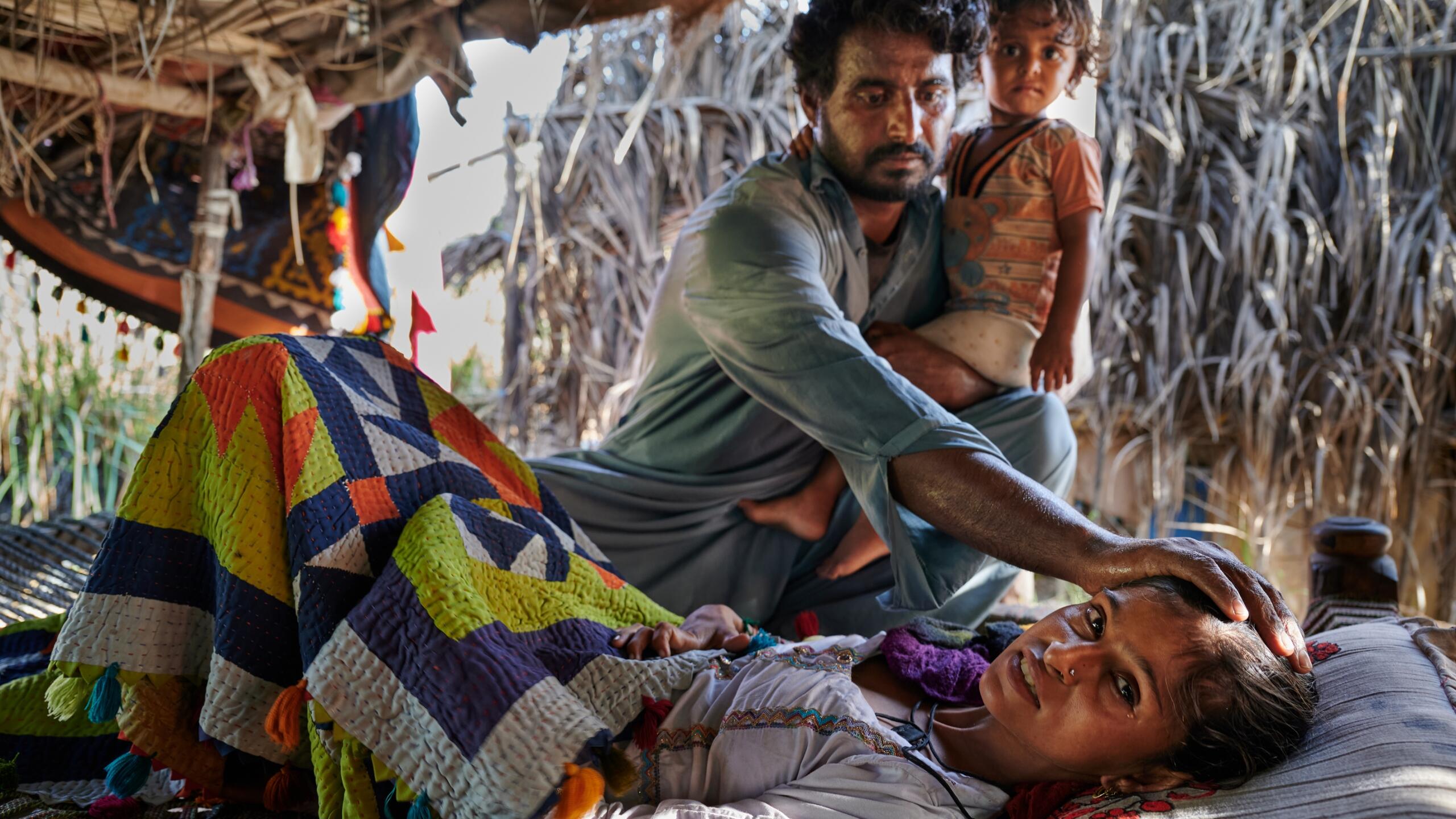
Holding her newborn baby, Guddi, 36, sits with all her six children on a charpai in her one-room mud home in the village of Rasool Buksh Channa in the Khairpur Mirs District of Sindh province. The baby was born during the height of the flooding crisis and delivered by an village traditional birth attendant. Guddi works picking cotton in fields near her home. She worked until the rain started and had to stop due to heavy rain followed by floods. She said,“Everyone has been out of work since the floods, but we still have to find a way to feed our children. We will have to somehow pass these difficult times and survive.”
© UNFPA / Shehzad Noorani

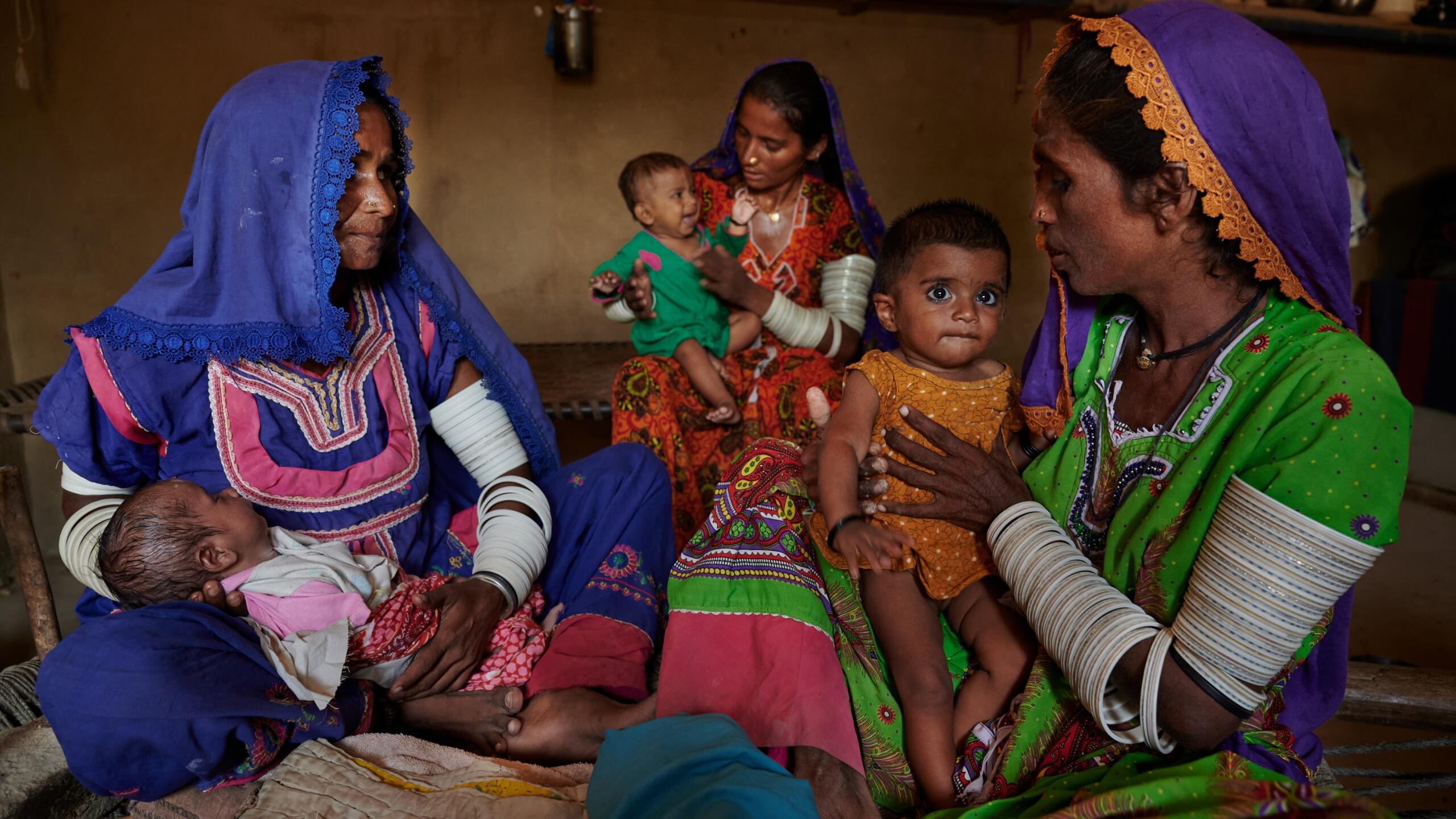
Many pregnant women in remote areas have no access to skilled medical care and rely on traditional birth attendants like Bashiran, 40, who is the only birth attendant in her village. She has received no formal training on safe deliveries but has assisted over 200 births. Sitting on the rubble of her destroyed home in the village of Ghulam Shabbir Kaladi in Sindh province, she told UNFPA, “It started to rain a lot. When it entered our homes we ran for higher ground around the village. We could not take anything. The children were crying and screaming from hunger. No one came to help.”
© UNFPA / Shehzad Noorani

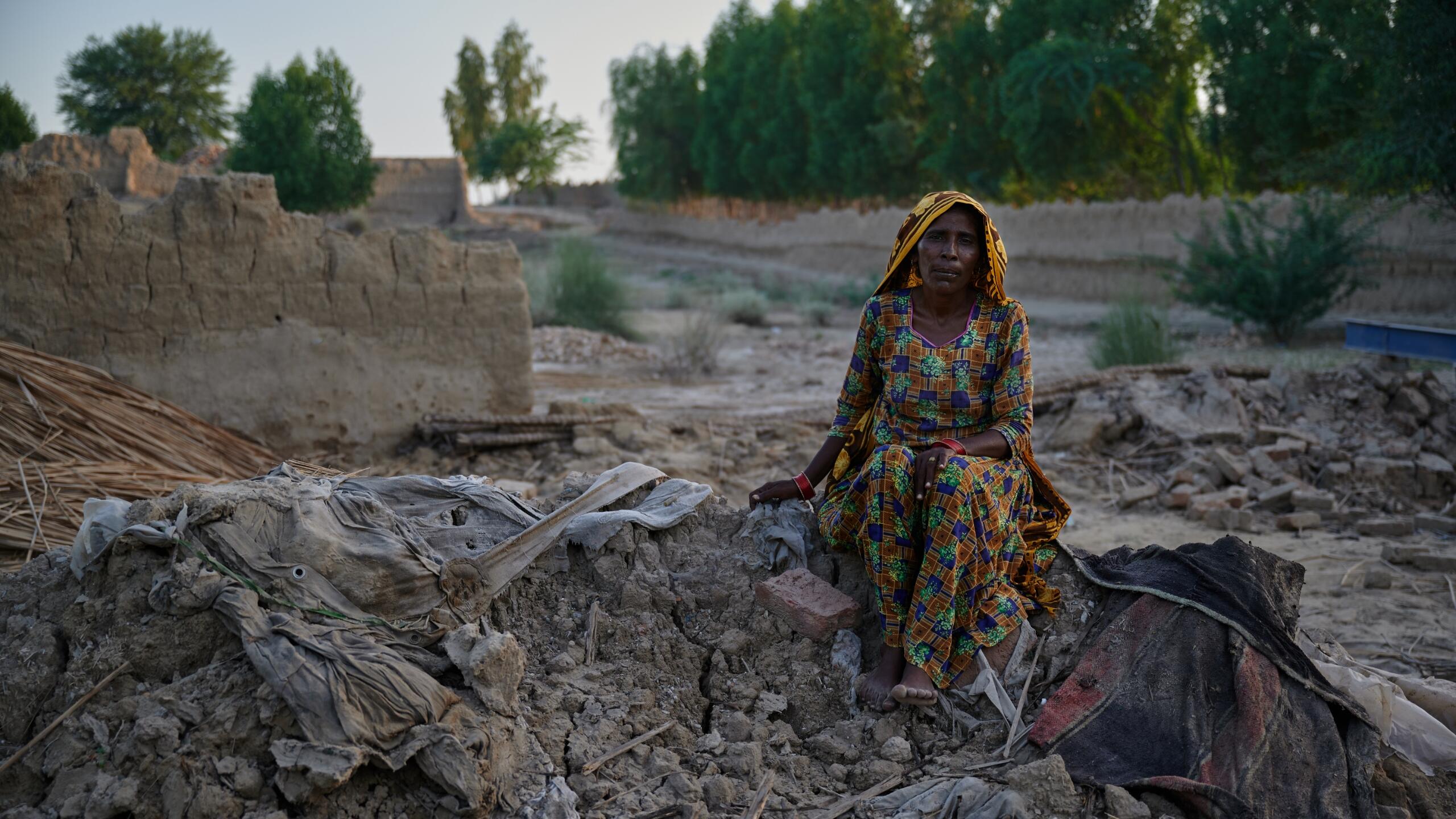
Villagers in Pakistan’s Khairpur Mirs District in Sindh province cross flooded land to get to their homes. Over 30 million people have been affected by the unprecedented flooding and 6.4 million are in need of urgent humanitarian assistance. Up to five times the 30-year average rainfall swept away homes, health centres, schools and dams within minutes, leaving millions of families displaced. As in any crisis, women and girls are the hardest hit. Many people are taking refuge in unsanitary, cramped and temporary shelters that have limited access to basic services, increasing the risk of a major public health crisis.
© UNFPA / Shehzad Noorani

